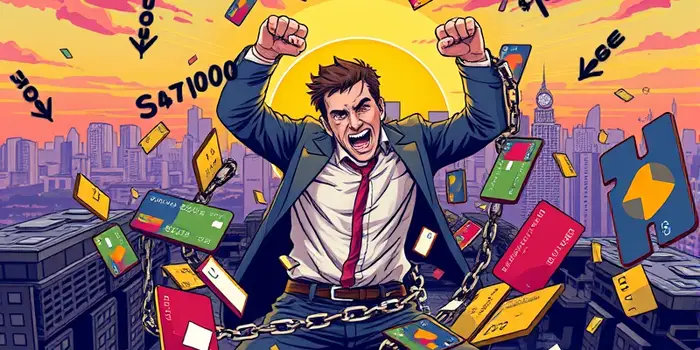
Every month, millions of credit card holders face a choice: pay off their balances in full or send in the bare minimum. On the surface, that small, manageable number feels like a lifeline when your budget is tight. Yet, beneath this seemingly innocent option lies a mechanism designed to keep you locked in a debt cycle that feels never-ending.
This article unpacks why the minimum payment is far from a friend. We’ll reveal the hidden costs, explore the psychological maneuvers of credit providers, and offer practical steps to break free. By understanding the trap, you can reclaim control, save thousands in interest, and build a foundation for a debt-free future.
Paying only the minimum might seem like the easiest path, but its long-term effects can be devastating. When you cover chiefly interest charges, your principal balance hardly budges. Over years, that adds up to exorbitant fees and emotional stress that can overshadow any short-term relief.
A minimum payment is often just 1–3% of your statement balance. Credit card issuers calculate it to cover the month’s interest plus a tiny fraction of principal. In practice, this means you pay a little while owing a lot.
That small monthly number acts as bait, luring you into what experts call the insidious lure of minimum payments. It anchors your expectations, making the prospect of full repayment feel out of reach. As long as you send that token amount, your account remains in good standing—no late fees, no damage to your payment history.
Imagine carrying a $5,000 balance at an 18% APR. If you pay just the minimum each month, it could take over 20 years to eliminate that debt. Worse still, you end up paying roughly $9,000 in interest on top of the original amount. That’s nearly double what you borrowed.
Consider a slightly smaller balance of $3,000 at the same rate. Paying only the minimum stretches your repayment period to about 11.5 years and adds over $3,154 in interest. What began as a few purchases now becomes a long-term financial burden.
The arithmetic is stark, yet many consumers fail to grasp how quickly interest compounds. Month after month, even as your payment remains unchanged, the portion allocated to interest stays high, making only a tiny dent in the principal.
Credit card companies invest heavily in behavioral economics. They know the minimum payment effect encourages customers to pay just enough to skate by. Anchored on the low figure, users often ignore the mounting total cost of debt.
This strategy benefits issuers, who collect interest for years. Meanwhile, you become trapped in a mountain of compounding interest charges, wondering why your balance never seems to shrink.
Current data shows that nearly 10.75% of U.S. credit card holders make only the minimum payment. As living costs rise—in rent, groceries, gas, and child care—those earning under $50,000 annually are the most vulnerable. New cardholders and those with limited credit histories also face higher APRs, increasing the odds of being ensnared.
Persistent minimum payments not only inflate your debt but can also push your credit utilization ratio above the ideal 30% threshold, leading to a lower credit score. A damaged score then makes borrowing more expensive or inaccessible, compounding financial strain.
Every extra dollar you apply toward your balance saves you interest down the line. Even adding just $25 more each month can shave off years from your repayment schedule and reduce total interest by thousands.
The journey out of persistent minimum payments isn’t easy, but it’s possible. By adopting disciplined spending habits, staying informed, and seeking help when needed, you can dismantle the trap.
Visualize yourself one day receiving that final statement with a zero balance. Feel the peace of mind and financial freedom wash over you as you realize you’ve escaped a system engineered to keep you indebted.
Replacing that cycle of interest with intentional savings empowers you to invest in your goals—buying a home, starting a business, or traveling the world. You’ll experience freedom from compounding interest and a renewed confidence in your financial path.
Don’t let minimum payments dictate your future. Recognize the trap, take decisive action, and embrace the power of strategic repayment. Your wallet—and your peace of mind—will thank you.
References













